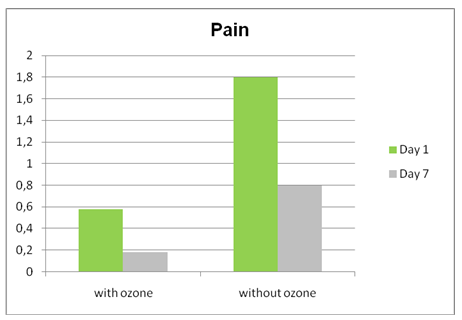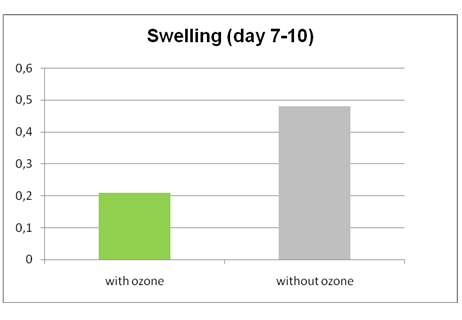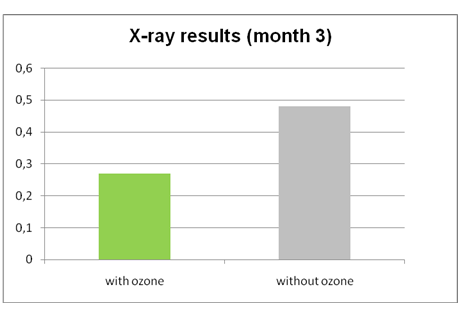Intraoperative ozone application
- to improve apicectomy results
The effect of Prozone for improving the results of apicectomies was investigated in a study by V. E. Karapetian, J. Nickenig, M. Herrera, et al., at the Interdisciplinary Teaching Hospital for Oral Surgery and Hospital and Teaching Hospital for Oral, Orthodontic and Plastic Maxillofacial Surgery of the University of Cologne.
Study Details
Target:
Apicectomy of a tooth is considered the final treatment available for retention of a tooth if all prior procedures, such as endodontic treatment, have not had the desired result. The success rate of apicectomy is, according to the literature, 75-90%. However, in spite of carefully conducted surgical procedures, cases occur in which apical periodontitis is not healed or recurs after an apicectomy.
This pilot study is designed to show whether the success rate of apicectomy can be improved with the intraoperative use of ozone for periapical disinfection. A secondary purpose is to assess the reduction of postoperative pain and swelling after apicectomy.
Study Design:
A total of 58 patients received apicectomies. The periapical region in 29 patients was disinfected with ozone gas (Prozone, W&H) for 48 seconds after the apicectomy and retrograde preparation of the root canal and then the area was rinsed with physiological saline solution.
The remaining 29 patients underwent the same surgical procedure, except that the periapical region was not disinfected with ozone, but the region was rinsed with physiological saline solution.

The postoperative procedure was as follows:
- Postoperative x-ray examination (digital dental film)
- Recall 1: by telephone on the 1st day +/- 1 after the operation, postoperative pain survey.
- Recall 2: on the 7th to 10th day +/- 1 after the operation, removal of sutures and clinical examination of the soft tissue, pain and swelling.
- Recall 3: three months after the operation, clinical examination of the soft tissue, pain and swelling, x-ray examination (digital dental film).
Results:
The postoperative pain on the 1st day +/- 1 and on the 7th-10th day +/-1 was rated from 0 to 10 on a pain scale as shown in the following Fig.
The maximum pain level of 10 was not reached. When ozone was used during the operation, postoperative pain on the 1st and 7th-10th days was reduced compared to patients with whom ozone was not used.

The swelling on the 7th day after the operation was assessed by yes or no.

The x-ray film was also assessed by yes-no after three months. Yes means apical brightening visible. No means no apical brightening visible.

Conclusion:
Apicectomy with intraoperative application of ozone to decontaminate the surgical site is a fast and practicable method. It also reduced postoperative pain and swelling. However, the real improvement in therapy is shown in the long-term survival statistics of a tooth subjected to apicectomy. This study has succeeded in demonstrating a trend indicating that intraoperative application of ozone during apicectomy represents an improvement in therapy.


comments